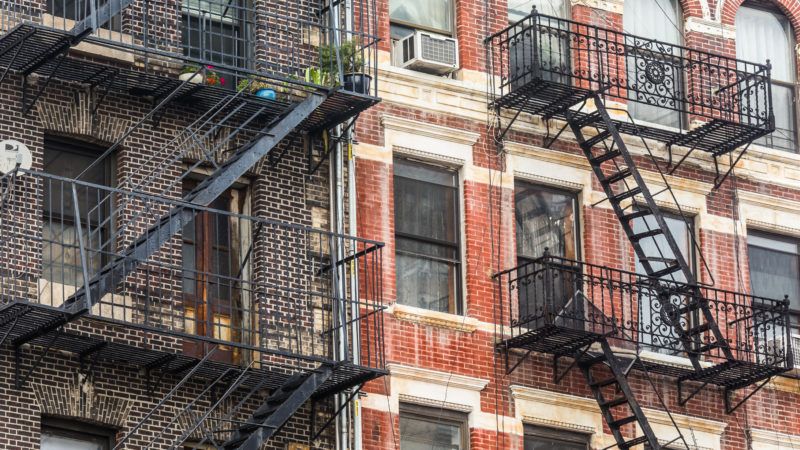New York's Progressive Rent Regulations Having the Exact Same Negative Consequence That Skeptics Predicted
New York told landlords they couldn't pass along renovation costs, so landlords stopped doing renovations

When the New York legislature passed major changes to the state's rent regulations in June 2019, critics warned the new law would reduce investment in, and renovations of, rental properties in New York City. Six months later, those predictions are bearing out.
Bloomberg reported this morning that sales of apartment buildings in the Big Apple fell by 36 percent in 2019, and that the money spent on those sales fell by 40 percent. The prices investors were paying for rent-stabilized units—where allowable rent increases are set by the government and usually capped at around 1 or 2 percent per year—fell by 7 percent.
"The fact that there's no correlation between the amount you put into a building and the amount of rent you can charge has completely shifted investment interest in rent-stabilized buildings," Shimon Shkury, president of the brokerage Ariel Property Advisors, told Bloomberg.
Shkury was referring to provisions of the state's 2019 rent regulations that make it much more difficult to pass along the costs of apartment renovations (such as adding a new oven) and major capital improvements (such as adding a new roof) to tenants.
That law also eliminated landlords' ability to "deregulate" (that is, charge market rates) for rent-stabilized apartments once rents reach certain levels. There are about a million rent-stabilized units in New York City.
In addition to a decline in sales, landlords are reportedly cutting back on the money that they're putting into the buildings that they do own.
According to a January survey conducted by the Community Housing Improvement Program (CHIP)—a trade association representing owners of rent-stabilized buildings in New York City—69 percent of building owners have cut their spending on apartment upgrades by more than 75 percent since the passage of the state's rent regulations. Another 11 percent of the landlords in the survey decreased investments in their properties by more than 50 percent.
The new law's limits on recouping the costs of renovating apartments mean it is often more financially feasible to leave old apartments vacant.
"A big majority of our housing stock of stabilized units have been occupied between 40 and 50 years. These units require up to $100,000 and sometimes more, to complete a gut rehabilitation. You don't need to be a genius to understand it makes no sense to invest that much only to get an $83.00 rent increase," one survey respondent told CHIP.
CHIP, alongside the Rent Stabilization Association, is suing state and city officials over the new regulations.
The Commercial Observer reports that the new rent laws are encouraging small- and mid-sized landlords to exit the market entirely, writing that "many property owners have woken up to a world where their buildings are worth 30 to 50 percent less than they were a year ago."
All of this conforms with predictions made by the Manhattan Institute's Howard Husock, who warned that limiting rent increases would lead to less maintenance and to deterioration of existing rental housing.
"The opposite of gentrification—call it shabbification—would emerge, as city housing stock becomes more and more degraded," Husock wrote last May. "Middle-class and working-class neighborhoods, where rents are often not that high (in some outer-borough neighborhoods, market rents are lower than permitted by law) would be at particular risk."
New York City does have serious housing affordability issues. But much of that can be blamed on the local leaders' failure to allow for enough new housing development to accommodate the city's growth. Rather than issuing market-destroying price regulations, the city authorities should help the city's tenants with zoning reforms that allow more housing construction. In other words, by letting markets work.
